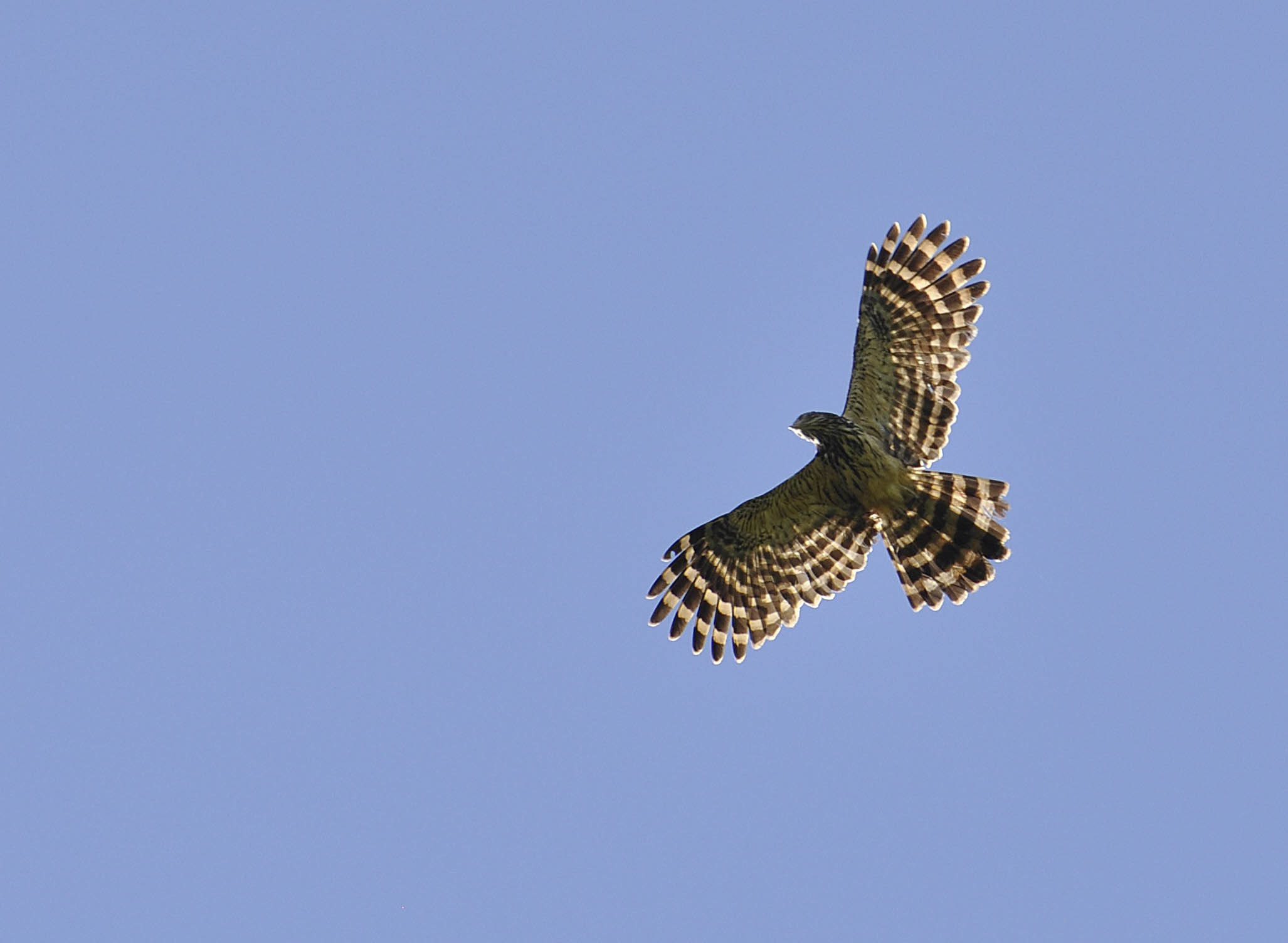
Henicopernis longicauda
SUBFAMILY
Accipitrinae
TAXONOMY
Falco longicauda Garnot, 1828, New Guinea. Monotypic.
OTHER COMMON NAMES
English: Long-tailed honey-buzzard; French: Bondrйe а longue
queue; German: Langschwanzweih; Spanish: Abejero Colilargo.
PHYSICAL CHARACTERISTICS
19.7–23.6 in (50–60 cm); male 15.9 oz (450–630 g), female
20.1–25.7 oz (570–730 g). Mottled brown and honey colored
upperparts with barred tail, and neck and chest streaked with
white.
DISTRIBUTION
New Guinea and western Papuan and Aru islands.
HABITAT
Tropical rainforest and forest edge from lowlands to midmountain
(c. 9,200 ft [2800 m]).
BEHAVIOR
Usually seen singly, in pairs or trios. Thought to be sedentary.
FEEDING ECOLOGY AND DIET
Hunts by day and at dusk. Preys on wasps and their larvae,
ants, grasshoppers, mantids, and other invertebrates, small
birds and their eggs and nestlings, and small lizards.
REPRODUCTIVE BIOLOGY
In display, the pair wheel over the forest; as they pass, one bird
rolls on back to present talons to other. Monogamous. Builds a
stick nest high in a tree, less often on a cliff ledge. Laying
recorded May and August. Little else known.
CONSERVATION STATUS
Not threatened. Quite common and widespread although deforestation
and hunting for traditional uses have caused it to
become scarce in some areas. New Britain honey-buzzard is
poorly known and may be declining due largely to clearing to
establish oil palm plantations.
SIGNIFICANCE TO HUMANS
The buzzard’s flight (wing and tail) feathers feature in ceremonial
headdresses of some New Guinea tribes.
Photo Gallery of - Long-tailed buzzard




 Animalia Life
Animalia Life